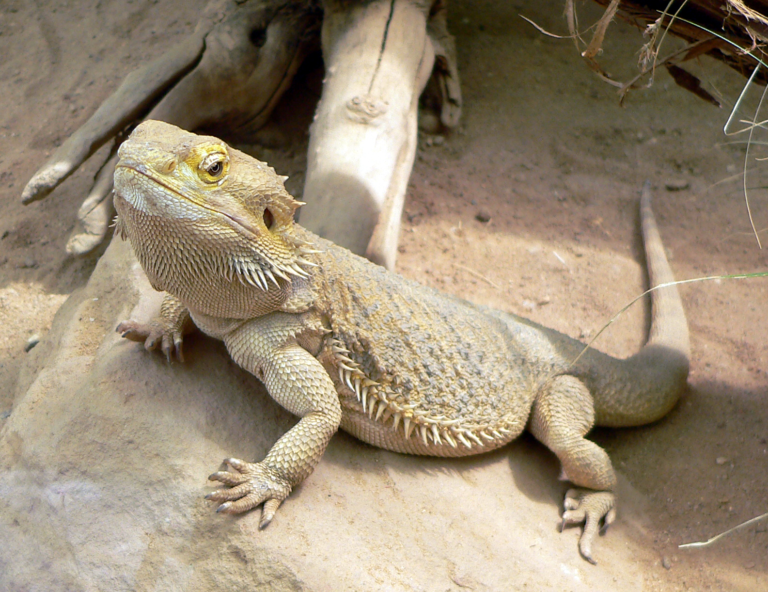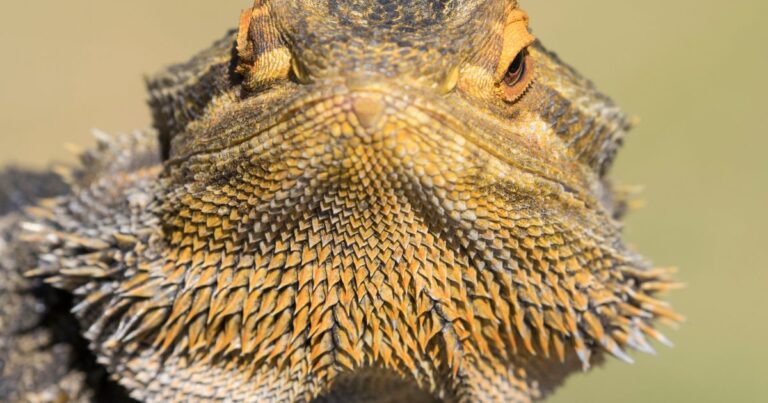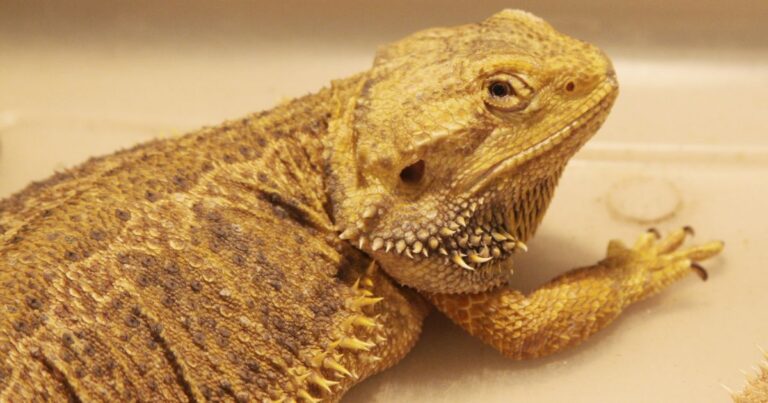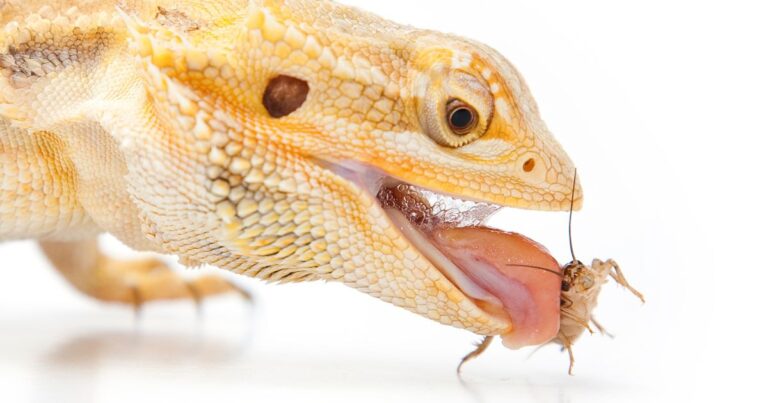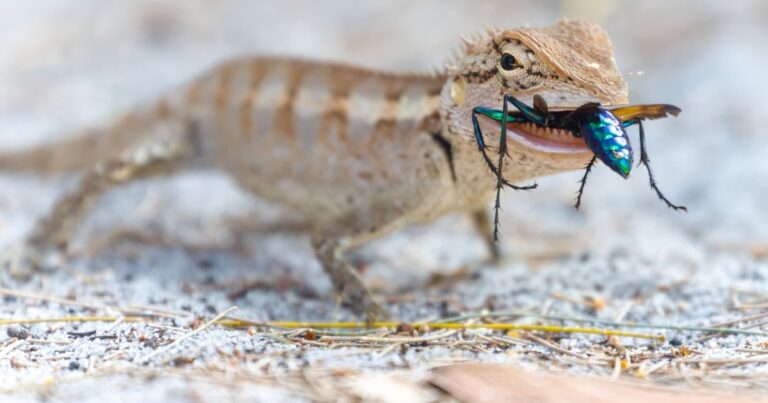Bearded Dragon Emergency Care and First Aid Measures
Table of Contents
Key Summary Table: Bearded Dragon Emergency Care
| Emergency Type | First Aid Measures | When to Consult a Vet |
|---|---|---|
| Physical Injuries (cuts, burns) | Clean with warm water, apply reptile-safe antiseptic | Deep cuts, burns, broken bones |
| Illness (loss of appetite, lethargy) | Ensure proper habitat conditions, offer favorite food | Symptoms persist for more than 24 hours |
| Respiratory Issues (difficulty breathing) | Remove potential irritants, ensure proper humidity | Breathing doesn’t improve, dragon appears distressed |
| Impaction | Warm bath, gentle belly massage | No improvement, dragon appears in pain |
When it comes to bearded dragon emergency care, knowing the right steps can be a real game-changer. From treating minor injuries to performing first aid, this guide has got you covered. So, buckle up, dragon enthusiasts, and let’s embark on this scaly adventure together!
Introduction
When it comes to our scaly friends, knowing how to handle emergencies can make all the difference. As a bearded dragon owner, I’ve learned that these creatures, while resilient, can sometimes find themselves in situations that require immediate attention. From minor injuries to sudden illnesses, being prepared for these scenarios is a crucial part of bearded dragon care. In this post, I’ll share my insights and experiences on bearded dragon emergency care, aiming to equip fellow dragon enthusiasts with the knowledge they need to handle such situations.
Our bearded dragons depend on us for their care, and it’s our responsibility to provide them with the best care possible.
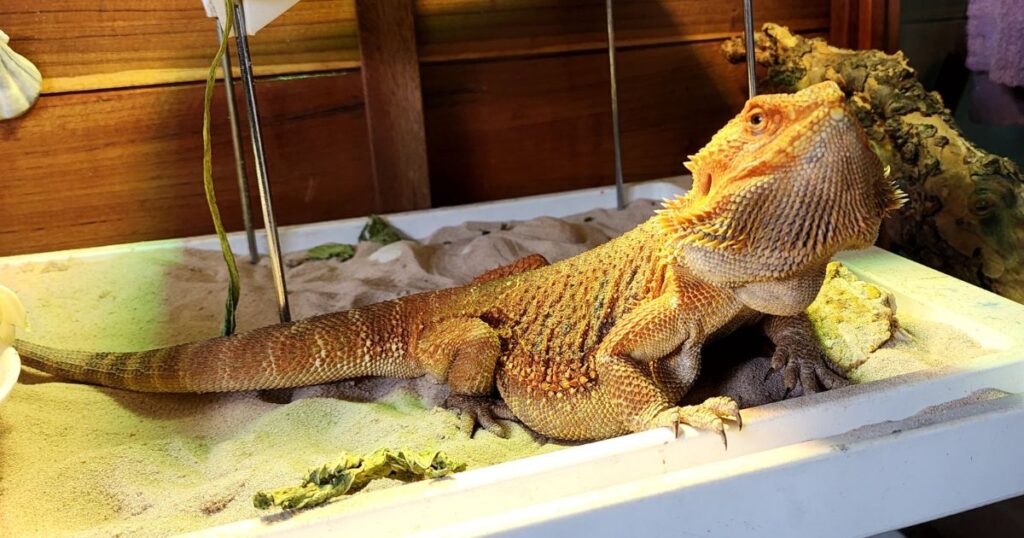
Understanding Bearded Dragon Emergencies
Just like any other pet, bearded dragons can face health emergencies that require immediate attention. These emergencies can range from physical injuries, like cuts or burns, to health issues like impaction or respiratory infections. It’s important to remember that bearded dragons, being the stoic creatures they are, often don’t show signs of distress until the situation is quite serious. Therefore, as dragon owners, we need to be observant and proactive in recognizing and addressing any signs of distress.
Understanding what constitutes an emergency for a bearded dragon is the first step in providing effective care. Some signs of a potential emergency can include sudden changes in behavior, loss of appetite, difficulty breathing, or visible injuries. Remember, when in doubt, it’s always best to consult with a vet experienced in reptile care.
List of Common Bearded Dragon Emergencies:
- Physical injuries (cuts, burns)
- Impaction (constipation)
- Respiratory infections
- Metabolic bone disease
- Dehydration
How to Treat an Injured Bearded Dragon
| Injury Type | Treatment |
|---|---|
| Cuts | Clean with warm water, apply reptile-safe antiseptic |
| Burns | Apply cold compress, then clean and apply antiseptic |
| Broken Bones | Immobilize if possible, seek immediate vet care |
Injuries in bearded dragons can occur due to various reasons, and knowing how to respond is crucial. Whether it’s a minor cut or a burn, the first step is always to remain calm. Panicking won’t help you or your scaly friend. Next, assess the situation. If the injury is severe, like a deep cut or a broken bone, seek immediate veterinary care.
For minor injuries, you can perform some basic first aid. Clean the wound gently with warm water and apply a reptile-safe antiseptic. It’s also important to keep the injured dragon separate from any other pets to prevent further stress or injury. Remember, while you can manage minor injuries at home, it’s always best to consult with a vet to ensure your dragon is receiving the best care possible.
Can Bearded Dragons Have Critical Care?
Critical care for bearded dragons is a topic that many dragon owners wonder about. The answer is yes, bearded dragons can indeed require critical care in certain situations. This could be due to severe illness, injury, or even chronic conditions that have worsened over time.
Critical care for bearded dragons often involves specialized veterinary treatment, including medication, surgery, or supportive care like fluid therapy or force-feeding. It’s important to have a vet who specializes in reptiles or exotic pets for such situations, as they’ll have the necessary expertise to provide the best care for your dragon.
List of Situations Requiring Critical Care:
- Severe illness not improving with home care
- Major injuries (deep cuts, broken bones)
- Severe dehydration or malnutrition
- Any condition causing significant pain or distress
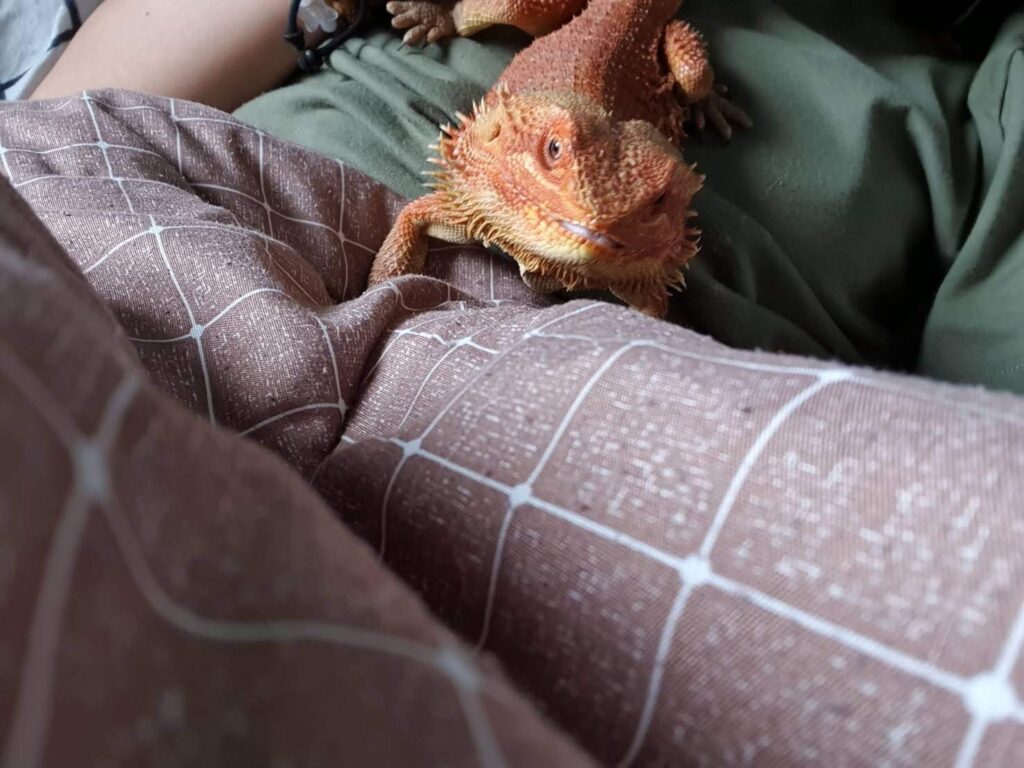
First Aid Measures for Bearded Dragons
| Item | Use |
|---|---|
| Tweezers | Removing foreign objects |
| Reptile-safe antiseptic | Cleaning wounds |
| Sterile gauze | Covering wounds |
| Digital thermometer | Monitoring dragon’s temperature |
| Heating pad | Warming up a cold dragon |
Having a first aid kit and knowing basic first aid measures can be a lifesaver for your bearded dragon. A basic bearded dragon first aid kit should include items like tweezers, a reptile-safe antiseptic, sterile gauze, and a digital thermometer. It’s also helpful to have a heating pad and a small, secure carrier for transporting your dragon if needed.
Knowing how to use these items in an emergency is just as important as having them. For example, if your dragon has a minor cut, you should clean the wound with warm water, apply the antiseptic, and then cover it with sterile gauze. If your dragon is showing signs of being too cold, like lethargy or darkened color, you can use the heating pad to gradually warm them up.
Helping a Bearded Dragon Survive an Emergency
Survival in an emergency situation depends on quick and appropriate actions. As a bearded dragon owner, your ability to recognize signs of distress, provide immediate first aid, and seek veterinary care can make a significant difference in your dragon’s survival and recovery.
One of the most important things you can do is to educate yourself about bearded dragon health and behavior. Understanding what’s normal for your dragon will help you recognize when something is wrong. Regular health checks, a balanced diet, and a proper habitat can also go a long way in preventing many emergencies.
Tips for Helping a Bearded Dragon Survive an Emergency:
- Stay calm and act quickly.
- Have a first aid kit ready.
- Know basic first aid measures.
- Consult with a vet immediately in severe cases.

Can You Do CPR on a Bearded Dragon?
While it’s possible to perform CPR on a bearded dragon, it should only be done by someone trained in reptile CPR. Improper techniques can cause serious harm.
CPR on a bearded dragon? It might sound unusual, but in certain situations, it could be necessary. However, it’s important to note that CPR on bearded dragons should only be performed by someone trained in reptile CPR, as improper techniques can cause serious harm.
If your bearded dragon is unresponsive and you can’t detect a heartbeat or breathing, it’s crucial to get them to a vet immediately. While on the way, you can try some emergency measures like gently massaging their chest to stimulate the heart and lungs, but again, these should only be done if you’ve been trained in reptile CPR.
Where Not to Touch a Bearded Dragon
While bearded dragons enjoy being handled, there are certain areas that should be avoided. Always handle your dragon gently and calmly, and remember to wash your hands before and after to prevent the spread of germs.
While bearded dragons enjoy being handled, there are certain areas that should be avoided. The belly is one such area. Bearded dragons have a soft underbelly, and applying pressure there can cause discomfort or even injury. Also, avoid touching their eyes and the inside of their mouth unless necessary for health checks or feeding.
When handling your bearded dragon, it’s best to let them climb onto your hand and to support their body fully when lifting them. Always handle your dragon gently and calmly, and remember to wash your hands before and after to prevent the spread of germs.
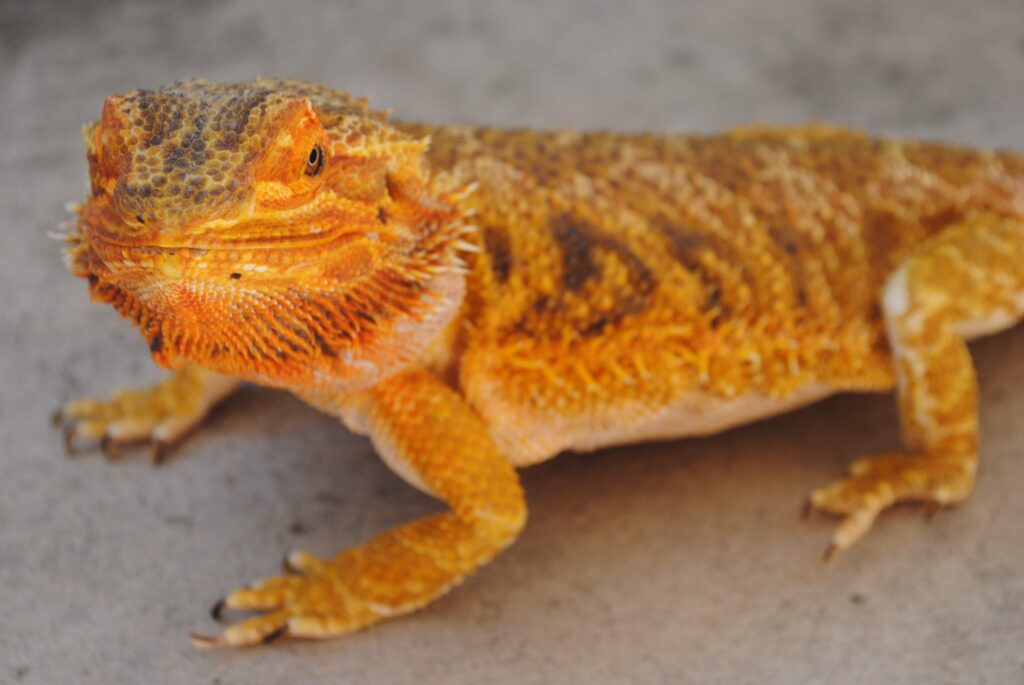
Conclusion
Being prepared for emergencies is part of being a responsible bearded dragon owner. From understanding potential emergencies to knowing basic first aid, these measures can go a long way in ensuring the health and safety of your scaly friend. Remember, when in doubt, always consult with a vet. After all, our bearded dragons depend on us for their care, and it’s our responsibility to provide them with the best care possible.
If you want to learn more about bearded dragon care, check out the Bearded Dragon Care category. And don’t forget to check out my index page on Bearded Dragon Health Issues.
Other pages of interest: Bearded dragon digestive issues and gastrointestinal health and Bearded dragon eye problems and ocular health
Disclaimer: This article is intended to provide general information on bearded dragon care. It is not intended to replace professional veterinary advice. Always consult with a qualified reptile vet for any health concerns with your bearded dragon.
Frequently Asked Questions
How do you treat an injured bearded dragon?
Minor injuries like small cuts can be treated at home. Clean the wound gently with warm water and apply a reptile-safe antiseptic. For more serious injuries like deep cuts or broken bones, it’s crucial to seek immediate veterinary care.
Can bearded dragons have critical care?
Yes, bearded dragons can require critical care in certain situations. This could be due to severe illness, injury, or even chronic conditions that have worsened over time. Critical care often involves specialized veterinary treatment, including medication, surgery, or supportive care like fluid therapy or force-feeding.
What first aid do you give a bearded dragon?
Basic first aid for a bearded dragon includes cleaning minor wounds with warm water and applying a reptile-safe antiseptic, warming up a cold dragon with a heating pad, and providing a quiet, stress-free environment. It’s also important to have a first aid kit ready with essential items like tweezers, sterile gauze, and a digital thermometer.
What helps a bearded dragon survive?
Quick and appropriate actions can help a bearded dragon survive in an emergency. This includes recognizing signs of distress, providing immediate first aid, and seeking veterinary care. Regular health checks, a balanced diet, and a proper habitat can also go a long way in preventing many emergencies.
Can you do CPR on a bearded dragon?
While it’s possible to perform CPR on a bearded dragon, it should only be done by someone trained in reptile CPR as improper techniques can cause serious harm. If your bearded dragon is unresponsive and you can’t detect a heartbeat or breathing, it’s crucial to get them to a vet immediately.
Where should you not touch a bearded dragon?
While bearded dragons enjoy being handled, there are certain areas that should be avoided. The belly is one such area as it is soft and applying pressure there can cause discomfort or even injury. Also, avoid touching their eyes and the inside of their mouth unless necessary for health checks or feeding.

